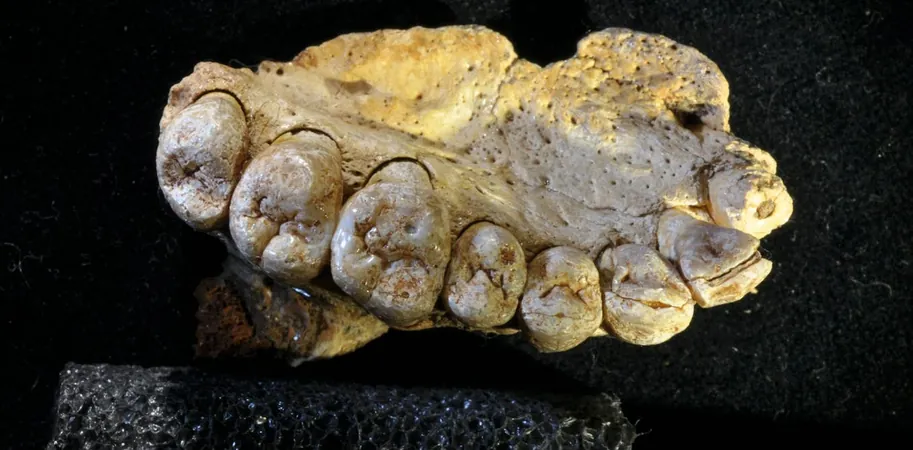
Are Scientists Unknowingly Harming Irreplaceable Fossils? A Groundbreaking Study Reveals Shocking Risks!
2025-07-16
Author: Siti
The Hidden Dangers of Fossil Scanning
Fossils are precious windows into our planet's history, revealing secrets about life that thrived millions of years ago. They help scientists unravel evolutionary mysteries and understand ancient climates and ecosystems.
Micro-CT: A Popular Tool Under Fire
Enter micro-computerized tomography, or micro-CT—a seemingly revolutionary method that allows researchers to study fossils in stunning detail without cutting them open. Widely hailed as non-destructive, it’s been essential for analyzing everything from bone cancer in early humans to the dental structures of our ancient ancestors.
A Surprising Revelation: Not So Safe After All!
However, groundbreaking new research published in "Radiocarbon" suggests that this technology might, in fact, impair fossil preservation. While it allows for virtual replicas and minimizes the physical handling of precious specimens, it’s not without potential drawbacks.
How Micro-CT Scanning Works
Micro-CT operates similarly to medical CT scans but focuses on tiny specimens. Using X-rays, it generates high-resolution 3D images, enabling scientists to examine fossils in detail without direct interaction. These scans are crucial for virtual documentation, allowing researchers worldwide to study these ancient artifacts without risking their integrity.
X-Rays: A Double-Edged Sword
Yet, the very nature of X-rays, which are a form of ionizing radiation, raises a red flag. While their impact on living tissues is well-studied, their effects on fossils have remained largely unexplored—but new findings indicate that they could inadvertently cause harm.
What Did the Study Discover?
Researchers examined both modern and ancient bones using standard micro-CT settings, measuring collagen levels both before and after scanning. Collagen is key for dating methods and provides insights into the diet and ecology of extinct species.
The results were alarming: while radiocarbon dating remained unaffected, the collagen content dropped significantly by about 35% after micro-CT scanning. This decrease could hinder various analytical processes, making some fossils unsuitable for essential studies.
The Implications for Future Research
Adding to the concern, previous studies highlighted that micro-CT contributes to misleading fossil aging methods. While there’s no visible damage, the covert alterations suggest the need to reevaluate how we regard micro-CT as a non-invasive technique.
What Lies Ahead for Fossil Preservation?
As the scientific community grapples with these findings, the future of fossil analysis could change dramatically. Researchers may need to adopt more cautious scanning practices to ensure that these invaluable historical treasures remain intact for generations to come.



 Brasil (PT)
Brasil (PT)
 Canada (EN)
Canada (EN)
 Chile (ES)
Chile (ES)
 Česko (CS)
Česko (CS)
 대한민국 (KO)
대한민국 (KO)
 España (ES)
España (ES)
 France (FR)
France (FR)
 Hong Kong (EN)
Hong Kong (EN)
 Italia (IT)
Italia (IT)
 日本 (JA)
日本 (JA)
 Magyarország (HU)
Magyarország (HU)
 Norge (NO)
Norge (NO)
 Polska (PL)
Polska (PL)
 Schweiz (DE)
Schweiz (DE)
 Singapore (EN)
Singapore (EN)
 Sverige (SV)
Sverige (SV)
 Suomi (FI)
Suomi (FI)
 Türkiye (TR)
Türkiye (TR)
 الإمارات العربية المتحدة (AR)
الإمارات العربية المتحدة (AR)